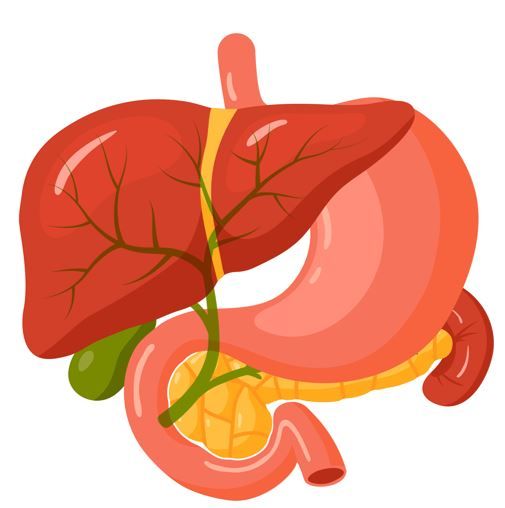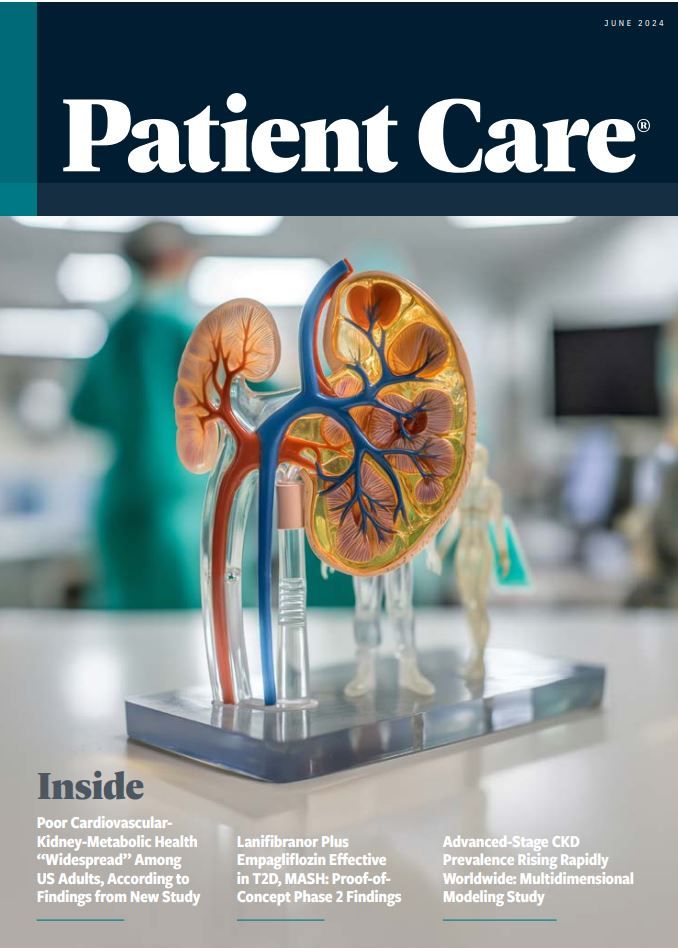Lanifibranor Plus Empagliflozin Effective in T2D, MASH: Proof-of-Concept Ph2 Findings
LEGEND phase 2 interim analysis findings include significant decreases in HbA1c in poorly controlled T2D and positive effects on several markers of liver injury.
Data from an interim analysis of the phase 2 proof-of-concept LEGEND trial (NCT05232071) demonstrated that the investigational small molecule lanifibranor significantly lowered hemoglobin A1C (HbA1C) level when given alone and in combination with empagliflozin compared with placebo in adults with metabolic dysfunction–associated steatohepatitis (MASH) and poorly controlled type 2 diabetes (T2D).1
©marina_ua/stock.adobe.com

Study results also showed statistically significant reductions in several markers of liver injury and glucose and lipid metabolism as well as improvement in hepatic steatosis. The findings were announced in a press statement by Inventiva.1
Lanifibranor is a peroxisome proliferator–activated receptor (PPAR) agonist designed to target the 3 PPAR isoforms. The orally available small molecule induces antifibrotic, anti-inflammatory, and beneficial vascular and metabolic changes. There are other PPAR agonists that target 1 or 2 PPAR isoforms for activation, according to Inventiva; however, lanifibranor is the only pan-PPAR agonist in clinical development for the treatment of MASH/nonalcoholic SH (NASH). The FDA granted lanifibranor both breakthrough therapy and fast-track designations for the treatment of MASH/NASH in 2020.1,2
“These LEGEND results provide valuable insights on the complementary mechanisms of action of an SGLT2 inhibitor and the pan-PPAR agonist, lanifibranor. MASH is a multifaceted disease that we believe will benefit from combination therapies in order to properly address the full cardiometabolic spectrum of the disease,” trial coprincipal investigator Michelle Lai, MD, associate professor of medicine at Harvard Medical School in Boston, Massachusetts, said in the announcement.1
LEGEND trial
LEGEND is a multicenter, randomized, 24-week, placebo-controlled trial designed to assess the safety and efficacy of lanifibranor in combination with the SGLT2 inhibitor empagliflozin for the treatment of patients with noncirrhotic MASH/NASH and T2D. Investigators are using a double-blind design for the lanifibranor 800 mg daily vs placebo arm and an open-label format for the combination of lanifibranor 800 mg and empagliflozin 10 mg daily arm.1
The interim analysis, planned per protocol, was performed once half the 63 randomly assigned patients with MASH completed the 24-week treatment period or prematurely discontinued treatment, according to the press release.1
Findings1
HbA1C. The study’s primary efficacy end point was achieved, with an absolute reduction in HbA1C level at week 24 among participants treated with lanifibranor alone or in combination with empagliflozin. Participants experienced decreases of 1.14% and 1.59%, respectively, vs a 0.26% increase in the placebo arm.
Hepatic steatosis. LEGEND researchers also reported statistically significant reductions in hepatic steatosis in participants treated with both lanifibranor and lanifibranor/empagliflozin (–47% and –38%, respectively) as measured by MRI proton density fat fraction compared with placebo (0%). Furthermore, 83% of participants who received lanifibranor alone and 67% treated with the SGLT2 inhibitor/pan-PPAR agonist combination reached a 30% or greater reduction in hepatic steatosis compared with 0% in the placebo arm.
Liver markers. Lai and colleagues also reported statistically significant effects for several secondary and exploratory end points, including alanine aminotransferase level, aspartate aminotransferase level, and insulin resistance. Importantly, the research team assessed markers of liver inflammation and fibrosis for the first time with lanifibranor and found significant effects with lanifibranor alone and in combination with empagliflozin.
Weight neutral. Although moderate, metabolically healthy weight gain has been observed in individuals treated with lanifibranor monotherapy, study participants treated with lanifibranor in combination with empagliflozin maintained a stable weight throughout the 24-week study. In addition, the visceral and subcutaneous adipose tissue ratio was significantly reduced in both the lanifibranor alone (–5%) and combination with empagliflozin (–17%) groups whereas an increase in the ratio of 11% was reported in participants assigned to placebo.
“The study was designed as a proof of concept, and these results are significant and strengthen confidence in the potential of lanifibranor to address the specific metabolic imbalance in patients with T2D while also addressing steatosis and fibrosis, a hepatic consequence of insulin resistance,” Onno Holleboom, MD, PhD, associate professor at Amsterdam University Medical Center in the Netherlands and coprincipal investigator of the trial, concluded.1
